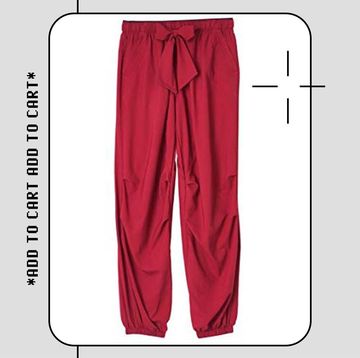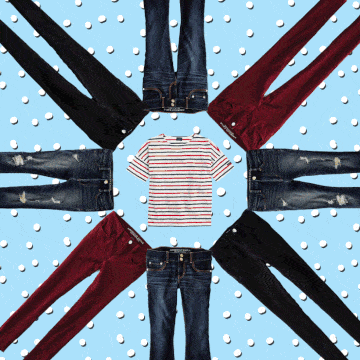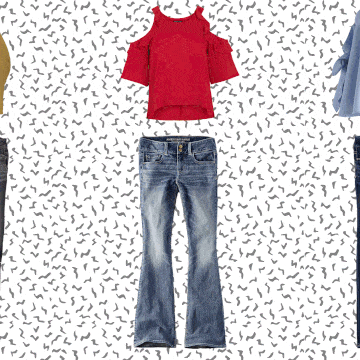Your mother has probably asked why you're spending money on ripped jeans a thousand times... or was it just my mom? In any case, distressed denim just looks so much cooler. And sometimes you need a little more airflow in the hot summer months! One thing not so cool about distressed or ripped jeans? They can be *so* expensive. Whether you want to save some moolah or take on a fashion DIY project, achieving that worn-in look on your own can ironically breathe new life into an old pair jeans.
Even better news? Most of the tools you'll need are probably already laying around in your pantry, kitchen, or bathroom. With some time and a lil patience, you can transform any of your old jeans into the tattered, frayed, holey pair of your dreams. Follow the steps below, and you'll have your ideal distressed jeans. Just a note though: If you also want to bleach your jeans, do step 6 [create jump link here] first before getting into the rest.
Step 1: Gather your tools
- Scissors
- Tweezers
- Chalk
- Bobby pins
- Sandpaper
- Disposable razor
- Bleach (optional)
Step 2: Decide where you want to distress
Using your chalk (or a pencil), mark horizontal lines about an inch apart where you want to add in some rips along the legs. It could be at the knees, more toward the hem, the thigh area, or all of the above! Go for it. The trick is to measure the lines smaller than you think because you can always make them larger, but you can't make them smaller once they've already been cut.
Step 3: Start cutting
Take your scissors and cut along those horizontal lines you marked being careful not to cut all the way through (unless you want rips along the back of your legs). This can be solved by adding some newspaper or cardboard in the legs so you're only cutting the front. Try to keep your lines even, and they'll look like strips that are about an inch thick like below.
Step 4: Pull out the threads
Pro tip: The white threads run horizontally and the blue threads run vertically. To create those rips and that distressed effect, you'll want to remove the blue threads. When you are set with the strips you just cut, you can use tweezers or even a safety pin to wiggle out the white threads first. This makes pulling out the blue threads a lil easier, since the goal is to have only the white threads running across those rips.
Yes, this is probably the most time consuming part, but just think of how satisfying it will feel once you're done! Go ahead and tear the white threads to make the opening a little messier, why not?
Step 5 (optional): Keep distressing
If you're happy with your ripped jeans, you're good to go! But if you want more of that worn-in look, you can also use sandpaper, a box grater, a bobby pin, or a disposable razor to scrape, soften, and fray some more edges on your jeans. You can do this at the pockets, waist, hem, zipper, or pretty much wherever you want some extra loose threads.
When you're using sandpaper, keep in mind that the coarser the grit (i.e., the rougher the sandpaper), the more it will create holes in your denim, so if you only want to make the fabric more soft, choose one that’s less coarse.
Step 6 (also optional): Fade the dye
FYI: Do this step first for distressed/ripped jeans that are extra faded! It'll be easier to cover all the material when it doesn't have any holes. Make a mixture of 50-50 water and bleach, then paint the bleach water on your jeans with a brush for a streaky effect, focusing most of the bleach water at the knees, where jeans tend to fade the most.
Let the bleach water set overnight to make them really light (I recommend checking on them every hour or so to make sure they don't get too faded for your preference), and then an hour before washing and drying them, paint the seams (where jeans tend to hold on to color the most) one last time for an even fade all over.
If you don’t have a paintbrush on hand, you can lighten them all over by soaking the whole pair in a mix of water and bleach, but with this method, you can’t really lighten one specific area. Feel free to skip this step completely if you’re already satisfied with the color.

I'm Cosmopolitan's Associate Fashion Editor and write about any and all trends, major celeb fashion moments, and why wide-leg jeans are basically the best. I originally moved to New York City to audition for RENT, only to find out that the play closed 10 years ago.



















